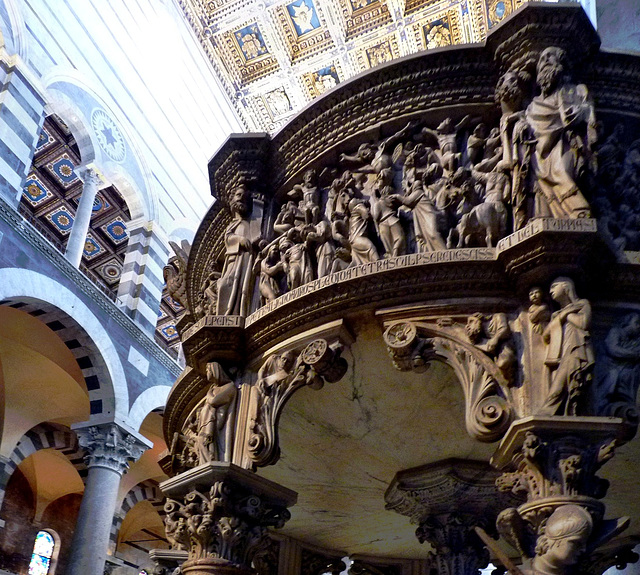Pisa - Duomo di Santa Maria Assunta
Pisa - Duomo di Santa Maria Assunta
Pisa - Duomo di Santa Maria Assunta
Pisa - Leaning Tower
Pisa - CARTA E CARTONE
Pisa - Panificio Bolognese
Pisa - Duomo di Santa Maria Assunta
Pisa - Duomo di Santa Maria Assunta
Pisa - Duomo di Santa Maria Assunta
Pisa - Duomo di Santa Maria Assunta
Pisa - Duomo di Santa Maria Assunta
Pisa - Duomo di Santa Maria Assunta
Pisa - Leaning Tower
Pisa - Leaning Tower
Pisa - Leaning Tower
Pisa - Museo dell'Opera del Duomo
Pisa - Museo dell'Opera del Duomo
Pisa - Museo dell'Opera del Duomo
Pisa - Museo dell'Opera del Duomo
Pisa - Museo dell'Opera del Duomo
Pisa - Museo dell'Opera del Duomo
Pisa - Museo dell'Opera del Duomo
Pisa - Museo dell'Opera del Duomo
Pisa - Duomo di Santa Maria Assunta
Pisa - Duomo di Santa Maria Assunta
Pisa - Duomo di Santa Maria Assunta
Pisa - Duomo di Santa Maria Assunta
Pisa - Duomo di Santa Maria Assunta
Pisa - Duomo di Santa Maria Assunta
Pisa - La Bottega del Gelato
Pisa - Duomo di Santa Maria Assunta
Pisa - Duomo di Santa Maria Assunta
Pisa - Duomo di Santa Maria Assunta
Pisa - Duomo di Santa Maria Assunta
Pisa - Duomo di Santa Maria Assunta
Pisa - Duomo di Santa Maria Assunta
Pisa - Duomo di Santa Maria Assunta
Pisa - Duomo di Santa Maria Assunta
Pisa - Duomo di Santa Maria Assunta
Pisa - Duomo di Santa Maria Assunta
Pisa - Duomo di Santa Maria Assunta
Pisa - Duomo di Santa Maria Assunta
Pisa - Duomo di Santa Maria Assunta
Pisa - Duomo di Santa Maria Assunta
Pisa - Baptistry
Location
Lat, Lng:
You can copy the above to your favourite mapping app.
Address: unknown
You can copy the above to your favourite mapping app.
Address: unknown
See also...
Keywords
Authorizations, license
-
Visible by: Everyone -
All rights reserved
-
227 visits
Pisa - Duomo di Santa Maria Assunta


The construction of the "Duomo" began in 1064 by the architect Busketo, who with this structure set the model for the distinctive Pisan Romanesque style of architecture.
When the construction of this cathedral started, Pisa was on a height of political (and financial) power. Pisa was an important commercial centre controlling large parts of the Mediterranean merchant fleet and navy.
In 1017 Pisa had militarily supported the Sardinian "Giudicati" (regional kings) to defeat Saracen troops in the north of Sardinia. Between 1030 and 1035, Pisa defeated rival towns in Sicily. In 1051–1052 admiral Jacopo Ciurini conquered Corsica. In 1063 admiral Giovanni Orlando, coming to the aid of the Norman Roger I, took Palermo from the Saracen. The gold treasure taken from the Saracens in Palermo allowed the Pisans to start the building of the cathedral.
The elaborately carved pulpit was carved by Giovanni Pisano (1302–1310) probably in cooperation with his father Nicola, who created the pulpit in the neighbouring baptistry. The hexagonal pulpit survived the fire, that severely damaged the cathedrale in 1595. It was packed away during the renovation.
After centuries it got rediscovered and is back in the cathedral since 1926. It is a masterwork. Influenced by French Gothic and Ancient Roman art, Pisano and his father are precursors of the Italian Renaissance.
Here is the crucification scene.
When the construction of this cathedral started, Pisa was on a height of political (and financial) power. Pisa was an important commercial centre controlling large parts of the Mediterranean merchant fleet and navy.
In 1017 Pisa had militarily supported the Sardinian "Giudicati" (regional kings) to defeat Saracen troops in the north of Sardinia. Between 1030 and 1035, Pisa defeated rival towns in Sicily. In 1051–1052 admiral Jacopo Ciurini conquered Corsica. In 1063 admiral Giovanni Orlando, coming to the aid of the Norman Roger I, took Palermo from the Saracen. The gold treasure taken from the Saracens in Palermo allowed the Pisans to start the building of the cathedral.
The elaborately carved pulpit was carved by Giovanni Pisano (1302–1310) probably in cooperation with his father Nicola, who created the pulpit in the neighbouring baptistry. The hexagonal pulpit survived the fire, that severely damaged the cathedrale in 1595. It was packed away during the renovation.
After centuries it got rediscovered and is back in the cathedral since 1926. It is a masterwork. Influenced by French Gothic and Ancient Roman art, Pisano and his father are precursors of the Italian Renaissance.
Here is the crucification scene.
- Keyboard shortcuts:
Jump to top
RSS feed- Latest comments - Subscribe to the comment feeds of this photo
- ipernity © 2007-2025
- Help & Contact
|
Club news
|
About ipernity
|
History |
ipernity Club & Prices |
Guide of good conduct
Donate | Group guidelines | Privacy policy | Terms of use | Statutes | In memoria -
Facebook
Twitter

Sign-in to write a comment.